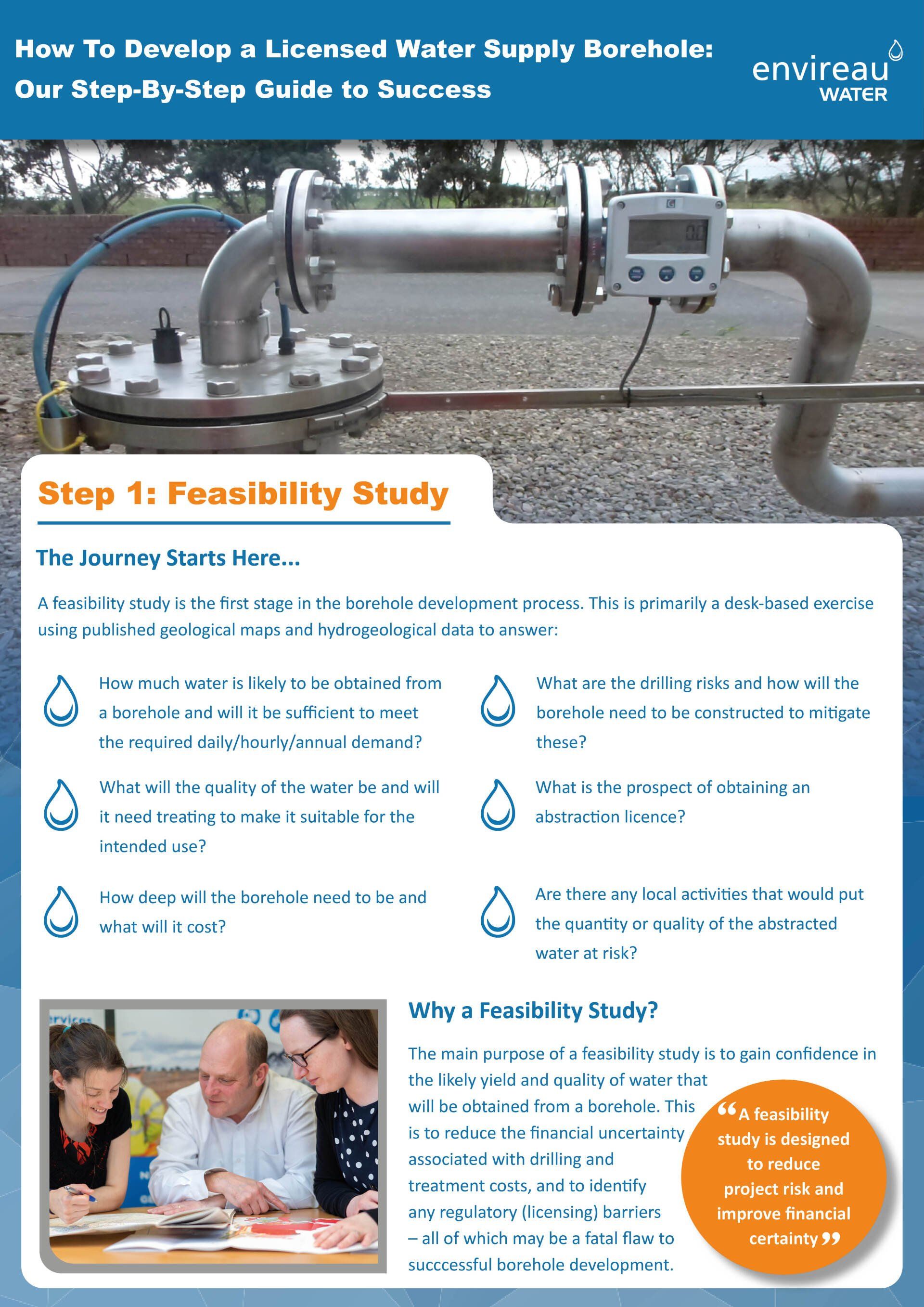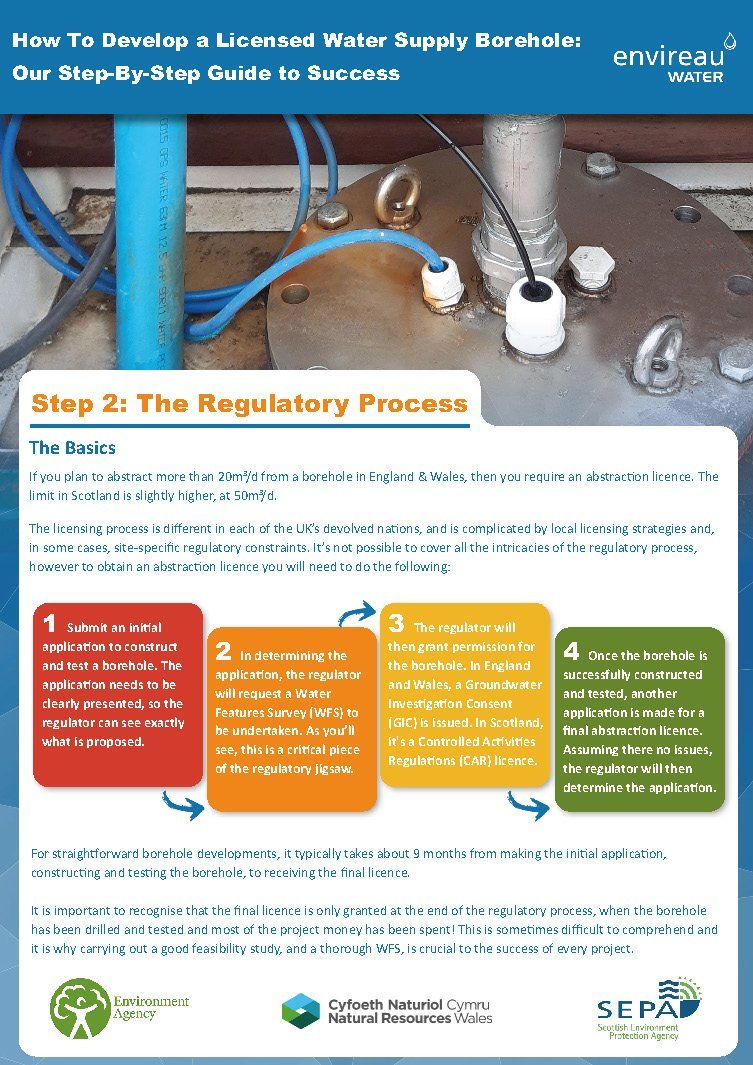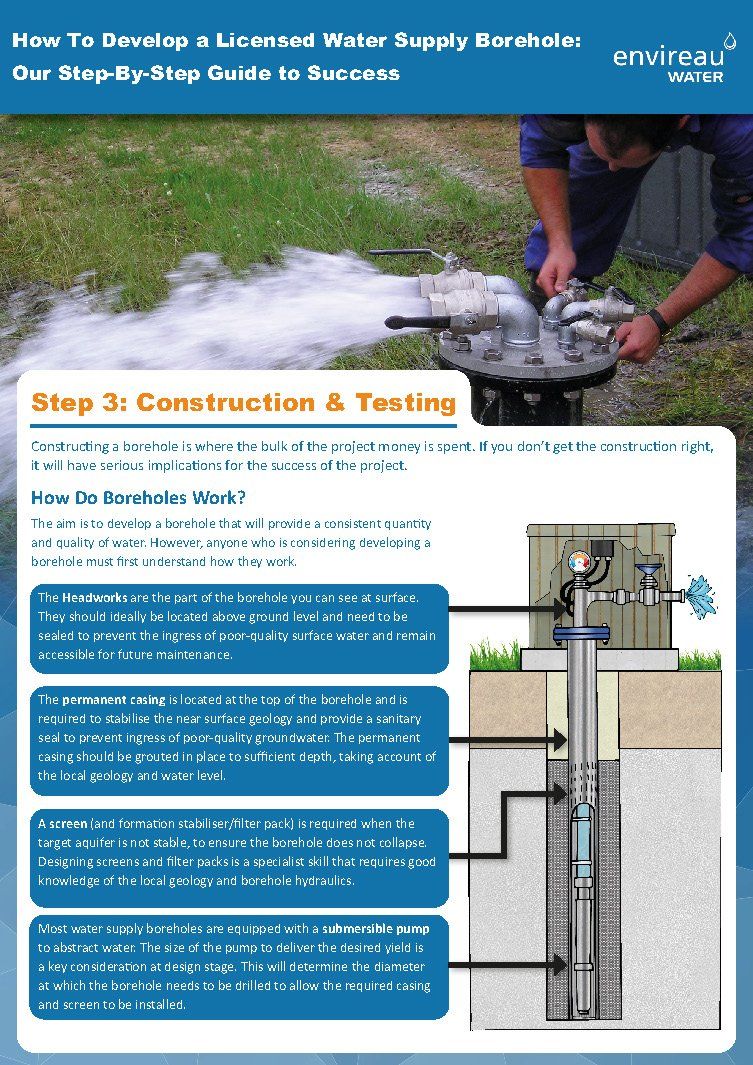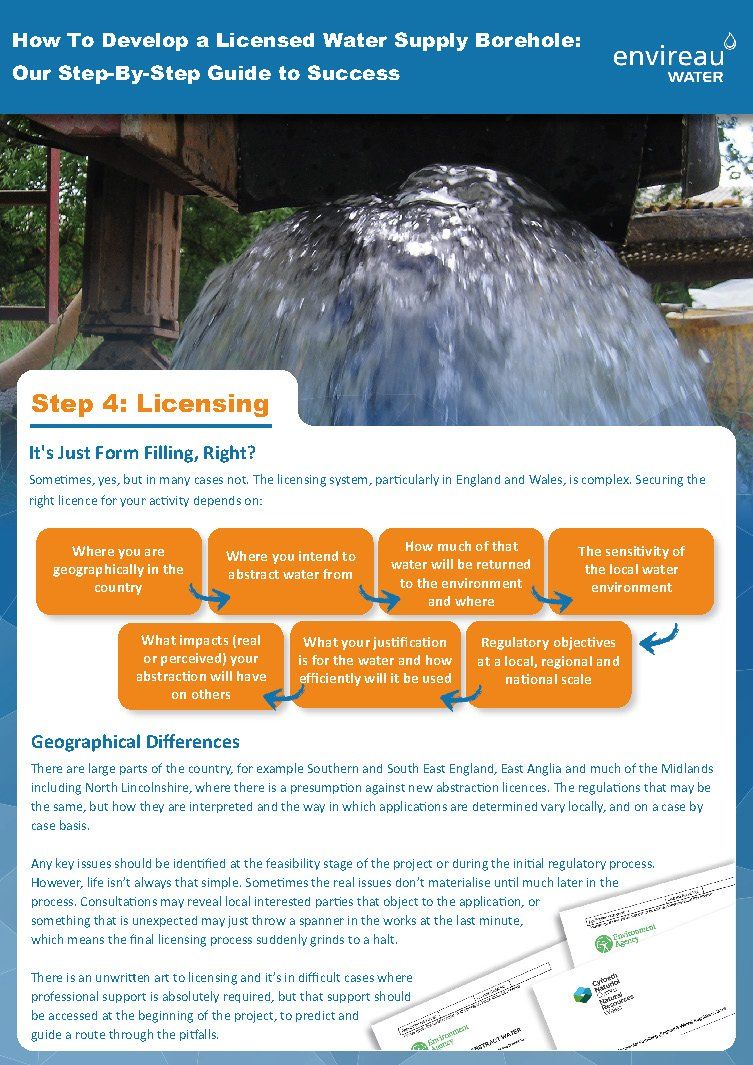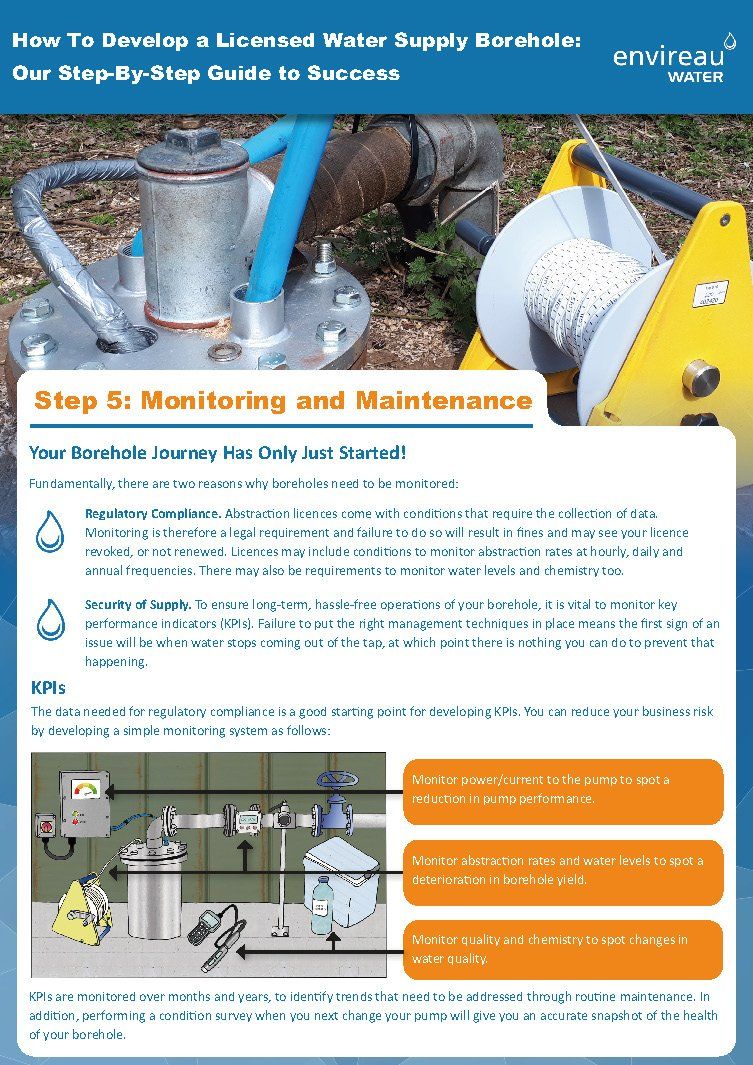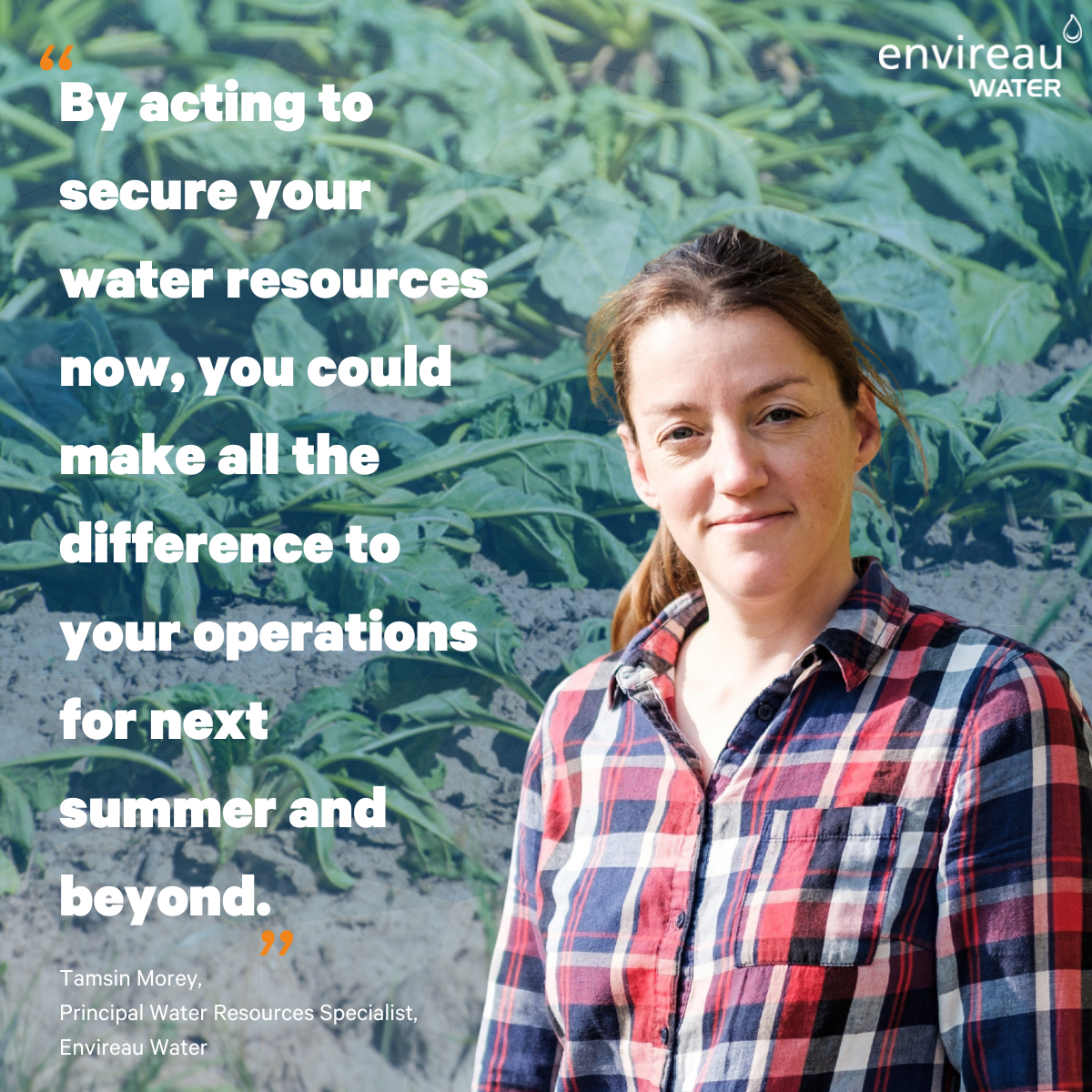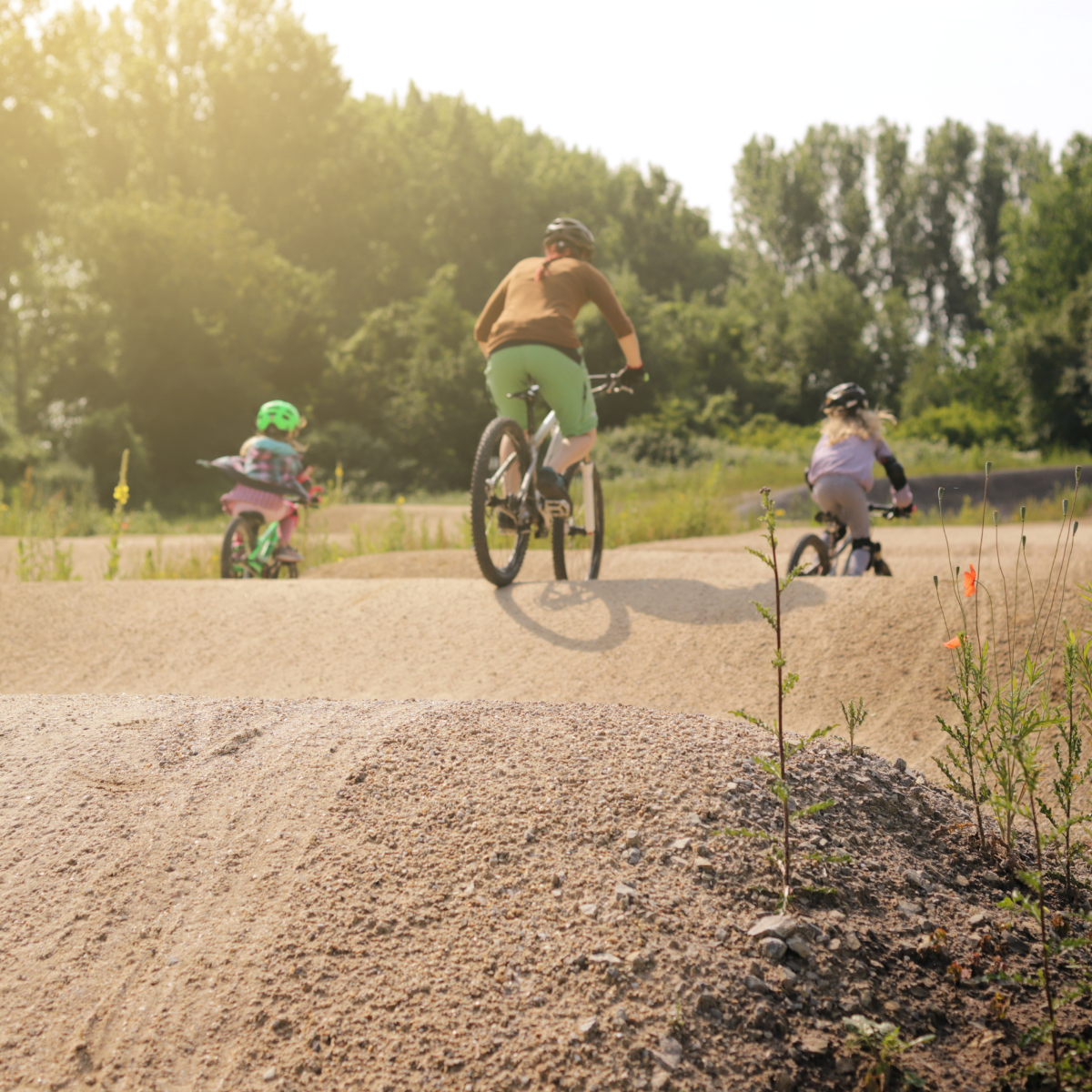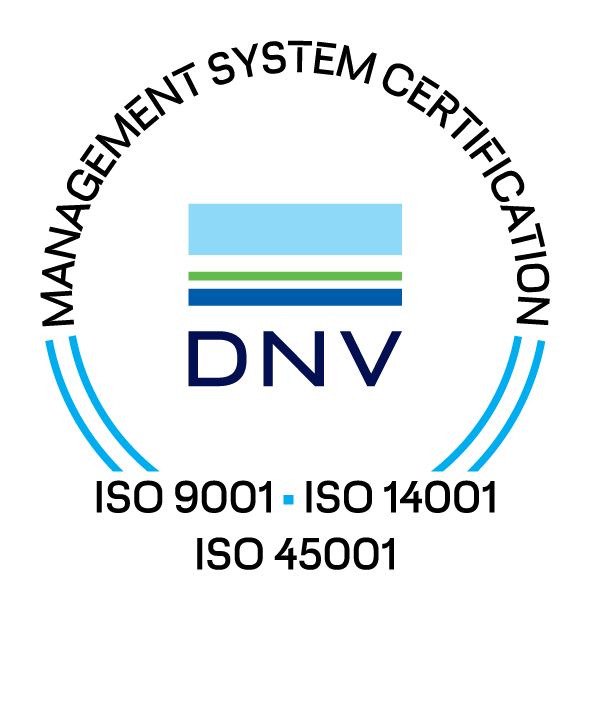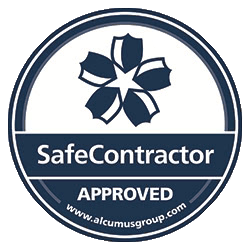How To Develop a Licensed Water Supply Borehole: Our Step-By-Step Guide to Success
The first of our exciting borehole series has arrived! This FREE series is targeted at those who own, operate or regulate borehole water supplies and will detail the key information you need to know to develop a licensed supply of the upmost quality.
Our specialists have broken down the process step-by-step, to highlight best practices, what can go wrong and how to avoid the most common problems and vitally, how to successfully navigate the regulatory process with the Environment Agency, Natural Resources Wales or SEPA.
Step One:
Starting with the all-important Feasibility Study, where the likely
borehole yield, water quality, and probability of obtaining a licence is determined.
Click the below to read more about the aims of the study, project timescales and costs:
Step Two:
Next up is the initial application to your regulatory body to gain permission to construct and test. In addition to the Water Features Survey, critical to obtaining a license and preventing future delays.
Find out all you need to know about the regulatory process below:
Step Three:
The construction and testing phase of borehole development is the most expensive part of the process. Get it wrong and it can have severe implications for the success of the project.
Click the image below to read more on construction standards, hydraulic development, test pumping and ultimately how to develop a perfect private water supply.
Step Four:
Securing a licence takes more than filling in the forms. It takes preparation and management by experienced water resource specialists who understand the regulatory process. With different licensing policies across the country, ensuring you are aware of the issues which can arise and the boxes you need to tick will help you to secure that licence.
Find out all you need to know about the art of licensing by clicking the image below.
Step Five:
You finally have a licensed borehole, yet your borehole journey has only just begun… In step 5 we cover the importance of monitoring and maintenance, how to comply with regulatory conditions, and how to make sure your water supply is reliable. Click the image below:
Throughout November we will be publishing our 5-part series, keep an eye on our social media pages or favourite this news article, checking back weekly for updates! We will conclude the series with a
webinar
on the
26th November to fill you in on all the technical detail and answer your questions. Register now by emailing
JosephineCanning@envireauwater.co.uk. Alternatively, if your questions can’t wait or you need our help with a project, get in touch with Dr Phil Ham on
PhilHam@envireauwater.co.uk.

